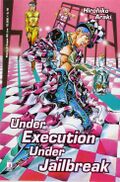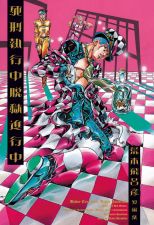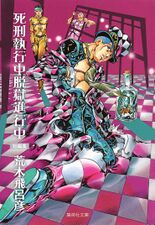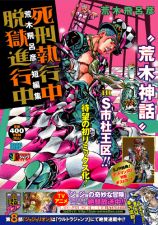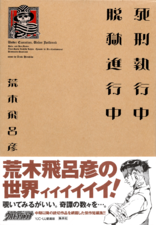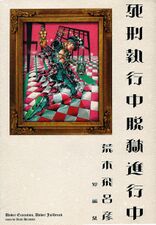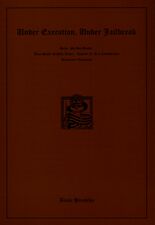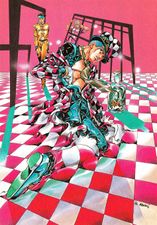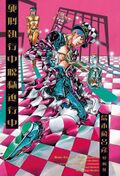
Under Execution, Under Jailbreak
Under Execution Under Jailbreak (死刑執行中脱獄進行中, Shikei Shikkōchū Datsugoku Shinkōchū) is a short story collection written and illustrated by Hirohiko Araki. The volume has seven chapters containing four unrelated stories.
A theatrical adaptation of the titular chapter, starring Japanese actor Mirai Moriyama, was performed in theaters across Japan from November to December 2015. The play was directed, composed, and choreographed by Nei Hasegawa.
An OVA adaptation of Thus Spoke Kishibe Rohan - Episode 16: At a Confessional by David Production was announced on August 18, 2019 and was released on Blu-ray and DVD on March 25, 2020.[1]
Summary
Under Execution Under Jailbreak is a one-shot chapter featuring a prisoner attempting to escape from a strange jail full of deadly traps. His jail cell is actually the execution room. After he is severely wounded, he discovers a hole in the wall, which is his only chance to escape. However, he is too scared to try going through it.
Dolce, and His Master is about a wrecked yacht in the midst of the ocean. A cat named Dolce and his master are the sole survivors. It has two chapters and was originally published in Allman magazine in 1996.
Deadman's Questions features Yoshikage Kira from Diamond Is Unbreakable who, despite having had his soul dragged to hell by the mysterious forces of the Ghost Girl's Alley, is still trapped on Earth, although now as a ghost without any of his memories from his prior life. It has three chapters and was originally published in Allman magazine in 1999.
Thus Spoke Kishibe Rohan - Episode 16: At a Confessional is the first chapter of the Thus Spoke Kishibe Rohan series, a JoJo's Bizarre Adventure spin-off starring Rohan Kishibe as the main protagonist. In this chapter, the mangaka hears a horror story from a mysterious sinner's confession. It was originally published in Weekly Shonen Jump in 1997.
Chapters
| Title | ISBN | |
|---|---|---|
| Chapters | Release Date | Cover |
| Under Execution Under Jailbreak (死刑執行中脱獄進行中 Shikei Shikkōchū Datsugoku Shinkōchū) |
978-4-08-619277-4 978-8-86-420690-5 | |
|
November 19, 1999[2] September 16, 2011[3]
|
|
Author's Note
The amount of effort it takes me to create a short story is about the same as me writing a longer one, the only difference being that the short story has to end after a few dozen pages. Even if I did have a good idea for a short story, I can't help but use it for my longer series because of that reason. The stories in this collection are examples of what happens when an unexpected friendship forms between an editor and a manga artist.
When the editorial department asked me to "write a short story", I was able to expand on an idea that I had left out of one of my longer series, an idea that made me think, "Well, I could use this for a short story." I can't help but think it was fate. In the twelve years that it took for this book to come out, that feeling has became more and more deeply ingrained in each of my works.なぜ自分は短編をあまり描かないのか?答えはアイデアを連載長編の方に使っちゃうからだ。長編の方には愛すぺき主人公がいるし、読者も短編よりは長編の方が魅力を感じてくれている。長編も短編もストーリーを0から作り上げていくのは同じ労力でも、短編は数十ページで終わりにしなくてはならない。だから、短編向きの良いアイデアがあってもつい長編の方に使ってしまう。
本書に集まった作品は、偶然に作られた編集者と漫画家の友情の結晶である。
「短編、描いてよ」
っていう編集部の依頼がきっかけで、長編からはみ出ていたアイデアを、「ンじゃ、これ短編に使おう」って感じでふくらましていくので、自分としては運命的なものを感じてしまう。そして、十二年に一冊という事で、ますますその思いが各作品に深く入っていってしまう。